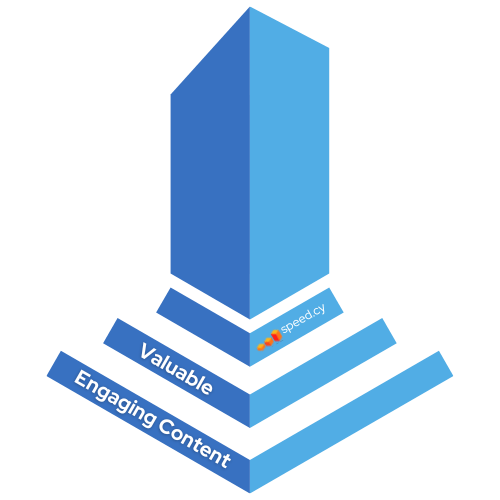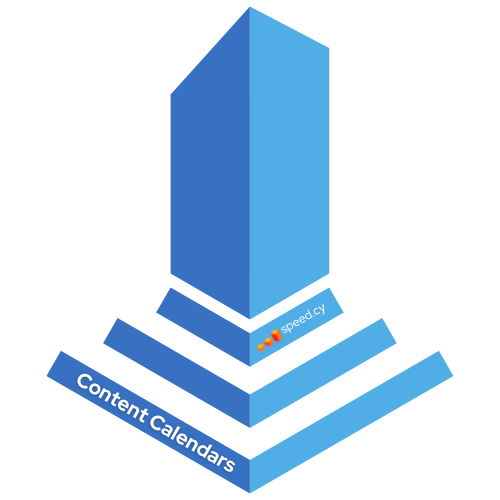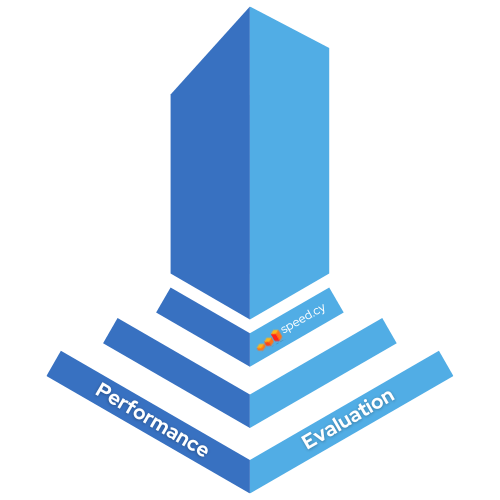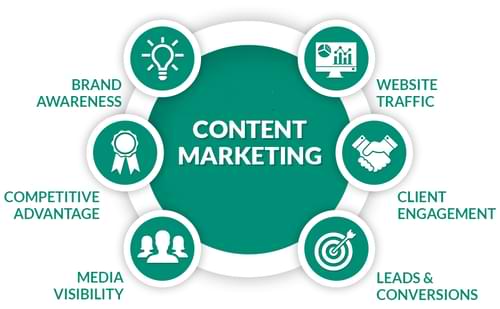It is easy to get lost in the crowded online marketing we are exposed to every day. with so many offers and advertising bombarding us every second. What is not easy though, is to choose the best advertising channels for our businesses. For that reason I decided to write this article. To let my readers know the answer to this problem.
By understanding the answer you can laverage the information received and use it to concentrate your marketing effors in the right marketing strategies.
You see among all the content marketing strategies, there a four of them that are considered to be the pillars of content marketing. These content pillars, are not the only ones, no, they are NOT. But surely you can do a proper content marketing plan with them.
So, in the hope of leaving you with enough information to help you solve the problem of deciding which content strategies to follow, I present to you the for key pillars for creating an effective content marketing strategy. Let’s go!
Content Marketing Pillar #1: Search Engine Optimization
The first pillar of successful content marketing is proper search engine optimization (SEO). If your content isn’t designed to be easily found in search engines like Google, you’re missing out on massive opportunities for organic visibility and traffic.

On-Page SEO
On-page SEO refers to optimizing individual pieces of content to improve their rankings. This starts with doing keyword research to identify terms and topics your audience is searching for, then strategically incorporating those keywords throughout each piece of content.
Specific on-page elements to optimize include:
- Headings and subheadings – Use relevant keywords in your H1 and H2 tags. Break content into logical sections using headings.
- Body content – Mention keywords naturally in the first and last paragraphs, as well as 2-3 times throughout. Avoid overstuffing!
- Image file names and alt text – Rename files and use descriptive alt text with target keywords.
- URL structure – If possible, include keywords in the URL for each page.
- Meta descriptions – Craft compelling meta descriptions of 150-160 characters that incorporate keywords.
By taking the time to optimize each piece of content for relevant search terms, you can substantially improve its organic findability. This in turn leads to more traffic and visibility for your brand over time.
Off-Page SEO
Beyond optimizing on-page elements, you also need an off-page SEO strategy to improve rankings. This refers to building links and earning mentions of your content from external websites, especially authoritative sites related to your industry.
Some effective off-page SEO tactics include:
- Link building – Reach out to other sites and publishers to request backlinks. Offer to create and contribute guest posts with links back to your site.
- Earned media – Pitch your content to journalists and influencers to secure coverage and backlinks from reputable sources.
- Social sharing – Promote content across social media to boost engagement and increase chances it gets organically shared online.
- Local citations – For local businesses, list your site on directories like Google My Business, Yelp, and others relevant to your geography and niche.
- Site speed – Improve your site’s load times, security, and technical SEO to enhance crawling and indexing.
With a balanced effort between on-page and off-page optimization, you can improve domain popularity and trust indicators that lead to higher SERP rankings.
SEO Tools and Best Practices
Here are some helpful SEO tools and best practices to incorporate into your optimization efforts:
- Keyword research – Use Google Keyword Planner, SEMrush, or Moz Keyword Explorer to find high-value keyword targets.
- Competitor analysis – Analyze competitors’ sites and content using SimilarWeb, Ahrefs, or SEMrush to identify opportunities.
- SEO audits – Run site audits with Moz, Ahrefs, or Screaming Frog to catch technical issues.
- Sitemaps and robots.txt – Create XML sitemaps and a robots.txt file to facilitate crawling and indexing.
- Page speed checks – Use Google PageSpeed Insights and Pingdom Tools to improve site performance.
- Metadata – Confirm metadata like titles, descriptions, alt text, and more are optimized.
With proper SEO implementation, you can maximize the organic visibility of all your content. Driving more search traffic will amplify results across all other content marketing metrics.
Content Marketing Pillar #2: Valuable, Engaging Content

The second pillar for content marketing success is consistently creating high-quality, engaging content tailored to your audience’s interests. Without value-driven content, even the best SEO will only go so far.
Research Audience Needs and Interests
Start by researching your target audience – what information are they looking for and how can you uniquely meet their needs? The specific topics and content types you create should directly align with their search intent and preferences.
You can gather intelligence on your audience through:
- Surveys and interviews – Directly ask customers what content they want via surveys and interviews.
- Social listening – Monitor relevant social media conversations for common questions and discussions.
- Keyword research – Assess search volume and trends for informational keywords.
- Competitor analysis – Review competitors’ top-performing content for inspiration.
- Analytics – Check Google Analytics behavior reports to see which existing content resonates.
Armed with these insights, you can refine your personas and define strategic content themes that will appeal to their interests. Aligning your calendar with audience needs ensures your content will add value.
Create Content Across All Relevant Formats
Today’s audiences consume content across a variety of formats and platforms. That’s why a successful content marketing strategy should include multiple content types including:
- Blog articles – In-depth articles are ideal for informational search terms and showcasing thought leadership.
- Videos – Both live-action and animated videos appeal to visual learners and stand out in feeds.
- Infographics – Visual guides condense complex topics into easily digestible shareable formats.
- Podcasts – Audio content is great for on-the-go audiences and extended storytelling.
- eBooks and guides – Long-form downloads offer in-depth exploration of popular topics.
- Social media updates – Bite-sized tips and insights on platforms like Twitter and LinkedIn.
- Interactive content – Quizzes, assessments, and calculators engage audiences through value-add.
Experiment with different formats to determine what your audience most responds to. Maintain a healthy mix of content types in your calendar to continually capture attention.
Ensure Quality and Originality
With all content you produce, the quality and accuracy should remain paramount. Your audience values authenticity and being treated like intelligent individuals.
Always fact-check information to avoid spreading misinformation. While repurposing evergreen insights can be helpful, ensure you’re delivering enough exclusive value.
Seeking unique angles on popular topics covered by competitors shows your audience they can rely on you as a trusted, credible source. Detailed, well-researched content demonstrates respect for your audience.
By making quality and originality core priorities, your content will excel at building loyal audiences that keep coming back for more.
Content Marketing Pillar #3: Content Calendars and Planning

To keep your content marketing engine running smoothly, the third essential pillar is maintaining a consistent content calendar. Planning calendars and setting publishing schedules will optimize your workflow and effectiveness.
Define Content Marketing Objectives
Start by clearly defining your overarching content marketing objectives:
- Traffic – How much monthly/annual traffic do you want to drive? Which keywords will you target?
- Leads – What lead generation benchmarks are you aiming for? How will you convert content readers?
- Engagement – What social engagement rates and email list growth do you expect?
- Brand awareness – How much do you want to increase brand visibility and familiarity?
With specific goals established, you can strategically create content designed to achieve each objective. All efforts should ladder up to your identified KPIs.
Map Out a Content Production Schedule
Next, plot your content themes and topics into a production schedule spanning 3-6 months. This calendar view makes it easy to plan topics around upcoming events, seasons, and promotions.
Aim to maintain a regular publishing cadence for each content type. For example, 2 blog articles per week, 1 video per month, 1 ebook per quarter. Consistency is key for sustaining momentum.
Leave room in your calendar to create content tied to trending topics in real-time. Staying nimble to respond to current events will keep you top of mind.
Refer back to your calendar frequently and share across teams to keep all efforts aligned and on schedule.
Maintain Consistent Posting Frequency
With your calendar set, diligently execute your publishing plan to turn out content on time, every time.
Whether you publish daily, multiple times per week, or less frequently – stick to the cadence you’ve defined. Predictability with your content builds loyalty and keeps audiences engaged.
That said, remain flexible to make adjustments based on performance data and audience response. You may discover certain topics or formats really resonate and warrant increased frequency.
Find your optimal balance between consistency and adaptability based on results. Your posting frequency should ultimately align with audience needs.
Content Marketing Pillar #4: Performance Evaluation and Refinement

The final pillar for effective content marketing is continuously evaluating performance and refining your approach. Without regularly analyzing your results, how will you know what’s working?
Select Key Performance Indicators
Start by determining your most important key performance indicators (KPIs) for content success. Potential metrics include:
- Traffic – Sessions, organic traffic, landing page views
- Leads – Form fills, demo requests, email list sign-ups
- Engagement – Social shares, comments, email open rates
- Brand awareness – Brand search volume, backlinks, domain authority
Choose 2-3 metrics that best align with your overall objectives. These will serve as your north star for assessing content efforts.
Assess Performance and Identify Gaps
With KPIs selected, closely monitor your dashboards and analytics to measure content performance. Assess which specific topics, formats, and distribution channels are generating the strongest results.
Identify any content gaps where you’re falling short of goals. Diagnose why certain content may be underperforming through surveys and social listening.
By regularly reviewing content analytics, you gain crucial insights on where to improve. Continuously ask how you can optimize to increase engagement and conversions.
Adapt Your Approach
With performance insights in hand, use learnings to adapt your content marketing strategy. Double down on your highest-performing content while phasing out or repurposing any underperformers.
Explore adjustments across elements like:
- Content topics and themes
- Formats and design
- Distribution channels
- Promotional tactics
- Call-to-actions
Stay on top of trends and leverage timely topics. But avoid drastic overhauls – iterate gradually to build on previous success.
Ongoing analysis and refinement is crucial for continually improving results. Don’t “set and forget” your content marketing program. By remaining agile and data-driven, you can scale your content success.

Key Takeaways on the 4 Pillars of Effective Content Marketing
Creating a thriving content marketing strategy takes much more than simply posting blog articles. To maximize your impact and results, execute on these four essential pillars:
- Pillar #1 – Implement on and off-page SEO to improve organic visibility and traffic to your content.
- Pillar #2 – Produce high-quality, engaging content tailored to your audience across formats.
- Pillar #3 – Maintain a consistent content calendar to organize and schedule content efforts.
- Pillar #4 – Continuously evaluate performance using KPIs, then adapt and refine your approach accordingly.
By mastering these four pillars, you can develop an effective, results-driven content marketing engine that delivers value and wins loyal audiences. Consistent optimization based on data will help you improve the ROI of your efforts over time.
Focus on providing genuinely helpful content that builds trust and authority. With the right pillars in place, your content marketing will connect with customers and propel your business forward.





